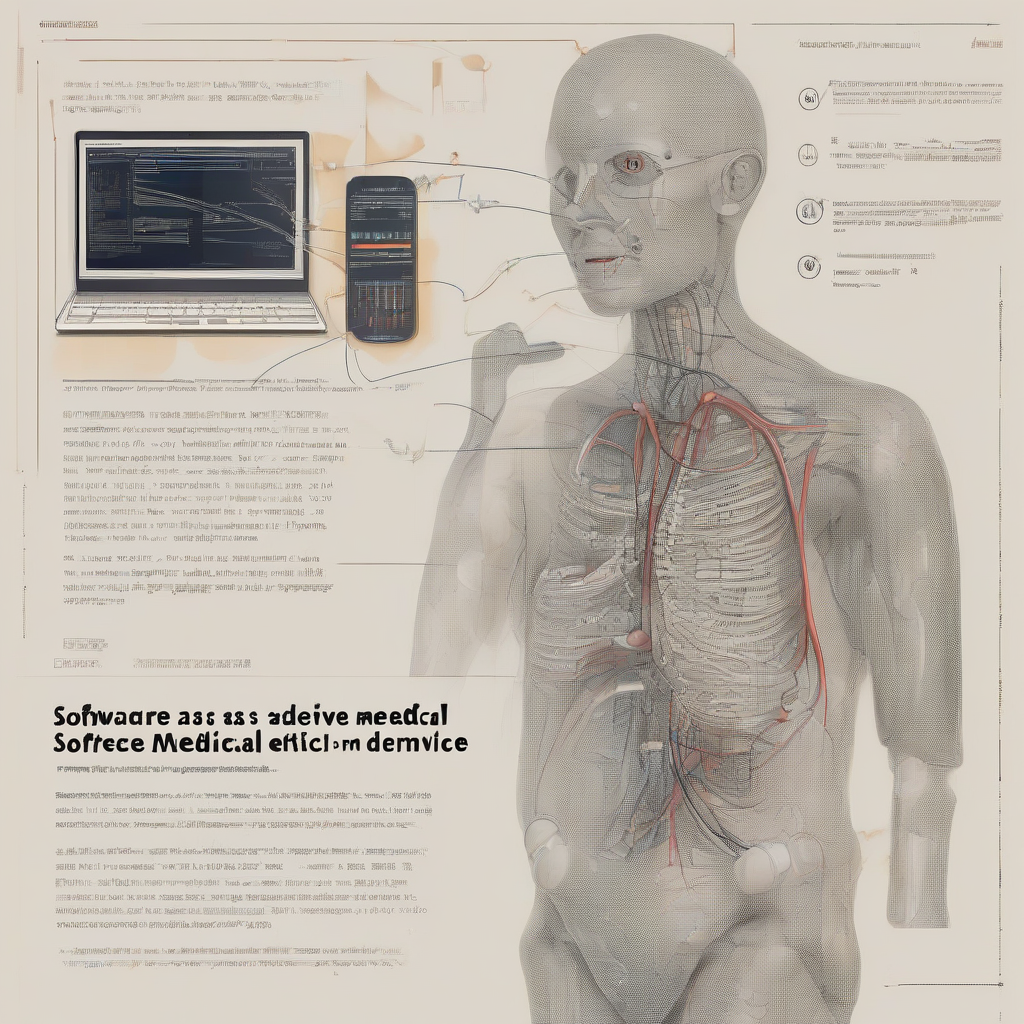Software as a Medical Device (SaMD): Navigating the Regulatory Landscape and Clinical Impact
The convergence of software and healthcare has led to the rise of Software as a Medical Device (SaMD), a rapidly evolving field impacting diagnosis, treatment, and patient monitoring. SaMD encompasses a broad range of software applications, from mobile health apps to complex image analysis systems, all designed to improve healthcare delivery. However, this innovative landscape necessitates a thorough understanding of the regulatory frameworks and clinical implications associated with its development, deployment, and use.
Defining Software as a Medical Device
SaMD is defined as software intended to be used for one or more medical purposes that perform these purposes without being part of a hardware medical device. This definition highlights the key differentiator: SaMD operates independently of traditional medical hardware. Examples range from simple diagnostic apps on smartphones to sophisticated AI-powered tools used in radiology or pathology.
- Examples of SaMD:
- Mobile health (mHealth) apps for tracking vital signs, medication adherence, or mental health.
- Software for analyzing medical images (e.g., X-rays, MRIs) to aid in diagnosis.
- Artificial intelligence (AI) algorithms for predicting patient risk or personalizing treatment plans.
- Remote patient monitoring (RPM) systems for continuous monitoring of patients’ vital signs.
- Software used in medical devices for control, monitoring, or data analysis.
Regulatory Considerations for SaMD
The regulatory landscape for SaMD is complex and varies across jurisdictions. Agencies like the U.S. Food and Drug Administration (FDA) and the European Medicines Agency (EMA) have established specific guidelines and regulations to ensure the safety and effectiveness of these devices. The level of regulatory scrutiny depends on the intended use and risk classification of the SaMD.
- Risk Classification: SaMD is categorized based on its potential risks to patients. Higher-risk SaMD, such as those used for diagnosis or treatment of life-threatening conditions, require more rigorous regulatory pathways, including clinical trials and extensive premarket review.
- Premarket Approval (PMA) and 510(k) Clearance (FDA): In the United States, the FDA employs PMA for high-risk SaMD and 510(k) clearance for moderate-risk devices. This involves demonstrating substantial equivalence to a predicate device already on the market.
- Conformity Assessment (EU): In the European Union, SaMD must meet the requirements of the Medical Device Regulation (MDR) and undergo conformity assessment procedures to demonstrate compliance.
- Postmarket Surveillance: Regardless of the regulatory pathway, postmarket surveillance is crucial to monitor the safety and effectiveness of SaMD after its release. This involves collecting data on adverse events and making necessary adjustments.
Clinical Validation and Verification
Ensuring the clinical validity and reliability of SaMD is paramount. This involves demonstrating that the software accurately measures or predicts what it claims to measure and that its results are consistent and reproducible. Rigorous testing and validation processes are essential.
- Clinical Trials: For high-risk SaMD, clinical trials are typically required to demonstrate safety and effectiveness in a target population. These trials must be designed according to good clinical practice (GCP) guidelines.
- Performance Evaluation: The performance of SaMD should be evaluated using appropriate metrics and statistical methods. This may involve comparing the software’s performance to existing gold standard methods.
- Data Integrity and Security: Ensuring the integrity and security of the data collected and processed by SaMD is crucial. Data privacy regulations, such as HIPAA in the U.S. and GDPR in the EU, must be adhered to.
Challenges and Opportunities in SaMD
Despite the significant potential of SaMD, several challenges remain. These include navigating complex regulatory pathways, ensuring data security and privacy, and addressing issues of bias and fairness in algorithms.
- Regulatory Uncertainty: The evolving regulatory landscape can create uncertainty for developers and manufacturers of SaMD. Keeping abreast of changes and ensuring compliance can be challenging.
- Data Security and Privacy: SaMD often involves the collection and processing of sensitive patient data, making data security and privacy a critical concern. Robust security measures are necessary to prevent data breaches and protect patient confidentiality.
- Algorithm Bias: AI-powered SaMD can be susceptible to bias if the data used to train the algorithms is not representative of the target population. Addressing bias is crucial to ensure fairness and equity in healthcare.
- Interoperability: Ensuring interoperability between SaMD and other healthcare systems is crucial for seamless data exchange and improved patient care. Standards and protocols are needed to facilitate interoperability.
The Future of SaMD
The future of SaMD is bright, with the potential to revolutionize healthcare delivery. Advances in artificial intelligence, machine learning, and mobile technology will further enhance the capabilities of SaMD, leading to more personalized, efficient, and effective healthcare.
- AI-driven Diagnostics: AI algorithms are increasingly being used to improve the accuracy and speed of medical diagnoses. This can lead to earlier detection of diseases and improved patient outcomes.
- Personalized Medicine: SaMD can facilitate the development of personalized medicine approaches, tailoring treatments to individual patients based on their unique genetic and clinical characteristics.
- Remote Patient Monitoring: RPM systems enabled by SaMD can improve the management of chronic conditions by allowing for continuous monitoring of patients’ vital signs and timely intervention.
- Enhanced Clinical Decision Support: SaMD can provide clinicians with valuable insights and support in making informed decisions, leading to improved patient care.
Conclusion (Omitted as per instructions)
